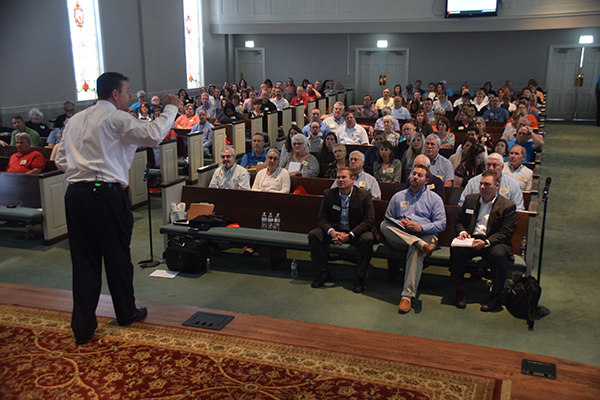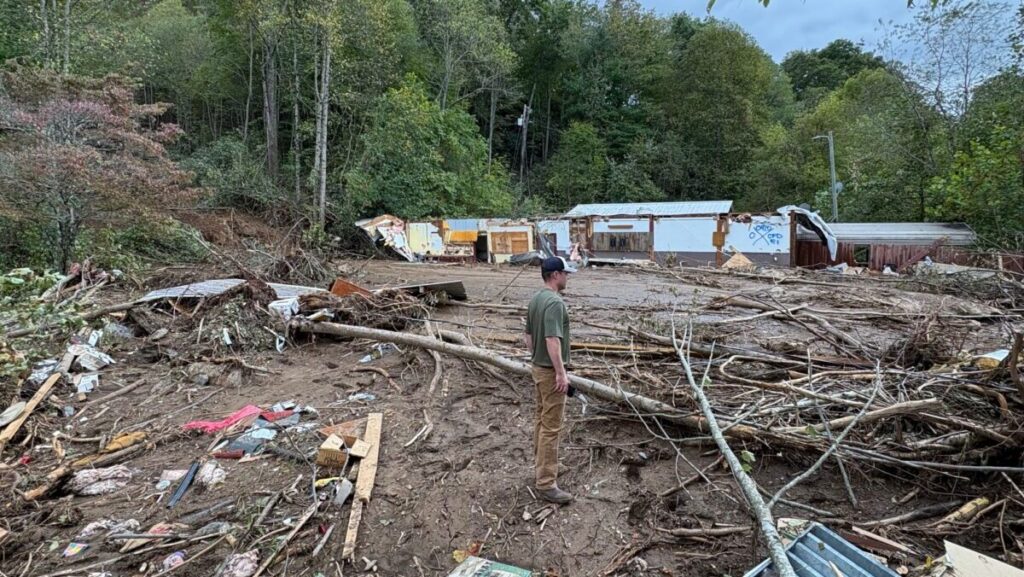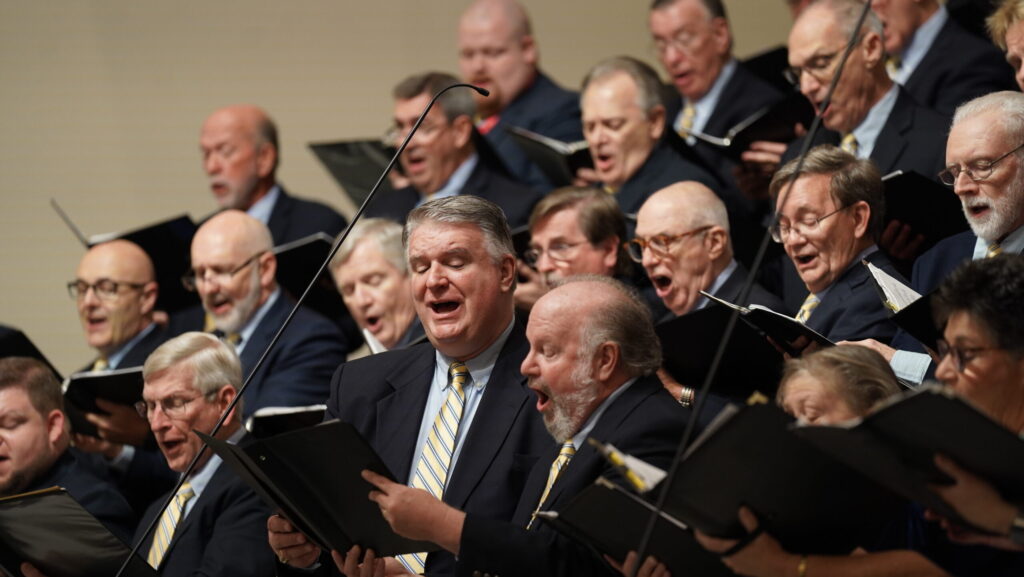Research suggests at least 60 million Americans are survivors of sexual abuse.
Concerned churches must be proactive in protecting children in their care from predators.
That was the message of the MinistrySafe Conference held at Canaan Baptist Church, Bessemer, on Sept. 19. The event was jointly sponsored by the Alabama Baptist State Board of Missions (SBOM) and GuideStone Financial Resources.
Greg Love, an attorney and a minister, served as presenter at the conference. Love and his wife, Kimberlee Norris, are co-founders of MinistrySafe and Abuse Prevention Systems of Fort Worth, Texas.
An estimated 1 in 4 girls and 1 in 6 boys under age 18 will be sexually abused, Love said. As a place where children are invited and welcomed, churches often attract predators.
Abusers most often go where the barriers are the lowest, Love explained.
“The Church is welcoming and affirming,” he said, “and we’re overjoyed when new people come and volunteer to work with children and youth. The abuser tries to gain the trust of leaders or what I call the ‘gatekeepers.’ They convince us they’re helpful, trustworthy and kind. Then they proceed to gain the trust of our children. This is called ‘grooming,’ and it’s a significant mark of the abuser.”
Love added that 50 percent of abuse in churches is perpetrated by volunteers, 30 percent by church staff and 20 percent by “aggressive children” or peer-on-peer abuse.
Once thought of by many as a Catholic problem, child sexual abuse crosses denominational lines now, Love said.
The problem is always a concern, said John Murphy, development manager for GuideStone property and casualty, noting it has been the top litigated claim in churches across the country in years past even though GuideStone has not had to deal with it often.
It’s what Love calls the “Baptist quandary” since other denominations have ecclesiastical systems, many of which have mandatory precautions against sexual predators.
Must identify the problem
“Baptists are congregational without a controlling authority but must do a better job identifying the problem (sexual predators in the Church) and implementing safeguards,” Love said.
The number of children harmed by each abuser is staggering. Ninety percent of abusers are males who began abusing their victims when they themselves were children — age 13 or 14, according to Lee Wright, coordinator of church compensation services for SBOM who helped organize the conference. Many abusers are never caught. The average age of arrest for a male perpetrator of sexual abuse is 35, meaning that the person might have been abusing boys 20 years or more. The typical female abuser has harmed 52 children before she’s stopped. Love defined sexual abuse as “any tricked, forced, manipulated or coerced sexual activity for the pleasure of the abuser.”
“The key is that the abused is not receiving pleasure, but most often guilt and repressed feelings,” he said. “The abuser has unequal power since he or she is an authority figure. And abuse need not be touching. Abusers can use social media to prey on children.”
Predators often introduce drugs, alcohol and pornography to young boys, and this adds to their guilt, which predators use to their advantage, Love said.
“With the girls, it’s more often social media, including Facebook, Snapchat and texting,” he said. “This is how young girls communicate today, and the predator is an expert on building trust and trying to form unhealthy relationships, including the sharing of pictures.”
Abusers look for children “on the fringe,” Love said, such as children in single-parent homes, children with meager possessions because of socioeconomic status or even children with physical impairments. Then they experiment with touching or closeness to see which children warm up to such attention.
Love highlighted three key failures in churches: the failure of staff to recognize risky behavior, the failure of staff to communicate to lay leadership and the failure of leadership to receive the information.
“The five words of regret I normally hear when we go into a church to do forensics are, ‘Now that you mention it …,’” he said. “Often church members notice abhorrent behavior and fail to report it until the abuse is complete.”
Love likened churches dealing with the fallout of abuse to the 9/11 Commission.
“The commission investigated why 9/11 happened,” he said. “This was after the fact. What churches need to be is more like Homeland Security — trying to prevent incidents before they occur.”
Safety system
An effective safety system involves at least five elements, beginning with awareness training, Love said. His organization and others offer training films that explain the dangers of exploitation.
“Skillful screening is also important,” he said. “This includes application forms that highlight high-risk responses and checking references.”
Background checks are the third element, Love said.
“Background checks aren’t a ‘silver bullet’ since sometimes predators are able to stay ‘under the radar’ of the legal system. But we must continue to require this of our workers,” he said.
The fourth element is appropriate policies.
“I’ve often heard church leaders talk of zero tolerance for sexual impropriety, but this can be meaningless unless the church has specific policies that are updated, shared and enforced,” Love emphasized.
The fifth element is monitoring.
“I can’t explain the psychology of an abuser,” he said, “nor is there a visual profile. What we look for is a behavioral profile. God has called church leaders to be shepherds and we mustn’t allow those with wolf-like qualities into the sheepfold. But even then we must continue to be observant.”
________________________________________________________________
Reporting law includes clergy
Mandatory reporting is a term teachers and medical professionals know well. Pastors and church leaders may be less aware of their legal requirements when it comes to reporting child abuse or neglect.
According to Alabama law, any person who is asked to provide “aid or medical assistance” to a child “known or suspected to be a victim of child abuse or neglect” is required to report their concerns to the local Department of Human Resources (DHR). The DHR office is then responsible to investigate and provide necessary protective services.
The list of professionals named in the law is extensive and includes physicians, dentists, nurses, school teachers and officials, law enforcement officials, day care workers and members of the clergy.
The mandatory reporting law for clergy has been in place since 2003 in Alabama but has had little enforcement, said Lee Wright, coordinator of church compensation services for the Alabama Baptist State Board of Missions. That appears to be changing in part because child sexual abuse has become one of the top reasons that a church is taken to court, Wright said.
“There is more attention. The reporting law is beginning to be enforced in Alabama and many other states,” he said.
Most professionals who are mandatory reporters regularly undergo training in reporting procedures, but there is no such requirement for training in Alabama Baptist life.
And while some information shared with clergy by a church member seeking spiritual advice is considered confidential under Rule 505 of the Alabama Rules of Evidence, that law has “no impact” on child abuse reporting, according to state missionary Jim Swedenburg.
Failing to report suspected child abuse is a misdemeanor under Alabama law, punishable by a sentence of not more than six months’ imprisonment or a fine of not more than $500. (TAB)






Share with others: